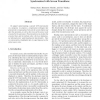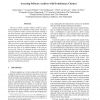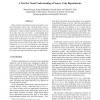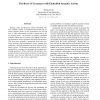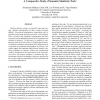IWPC
2008
IEEE
14 years 6 months ago
2008
IEEE
As an object-oriented system evolves, its architecture tends to drift away from the original design. Knowledge of how the system has changed at coarse-grained levels is key to und...
IWPC
2008
IEEE
14 years 6 months ago
2008
IEEE
To support understanding a specific GUI functionality in a program, we propose a visualization technique that presents the correspondence between the screens before and after the...
IWPC
2008
IEEE
14 years 6 months ago
2008
IEEE
Libraries are the most widespreaded form of software reuse. In order to properly use a library API, its clients should fulfill a series of (many times implicit) assumptions made ...
IWPC
2008
IEEE
14 years 6 months ago
2008
IEEE
The way in which a system’s software archive is partitioned influences the evolvability of that system. The partition of a software archive is mostly assessed by looking at the...
IWPC
2008
IEEE
14 years 6 months ago
2008
IEEE
REportal is an existing web-based reverse engineering portal web site that provides access to a suite of reverse engineering and program comprehension tools via a web This abstrac...
IWPC
2008
IEEE
14 years 6 months ago
2008
IEEE
Inheritance is an important mechanism when developing object-oriented programs with class-based programming languages: it enables subtyping, polymorphism, and code reuse. Inherita...
IWPC
2008
IEEE
14 years 6 months ago
2008
IEEE
Many program comprehension tools use graphs to visualize and analyze source code. The main issue is that existing approaches create graphs overloaded with too much information. Gr...
IWPC
2008
IEEE
14 years 6 months ago
2008
IEEE
Software maintenance tasks typically involve an important amount of program investigation effort on the part of software developers. To what extent can we benefit from prior prog...
IWPC
2008
IEEE
14 years 6 months ago
2008
IEEE
Reusing syntax specifications without embedded arbitrary semantic actions is straightforward because the semantic analysis phases of new applications can feed off trees or other ...
IWPC
2008
IEEE
14 years 6 months ago
2008
IEEE
Modern software systems are typically large and complex, making comprehension of these systems extremely difficult. Experienced programmers comprehend code by seamlessly processi...

